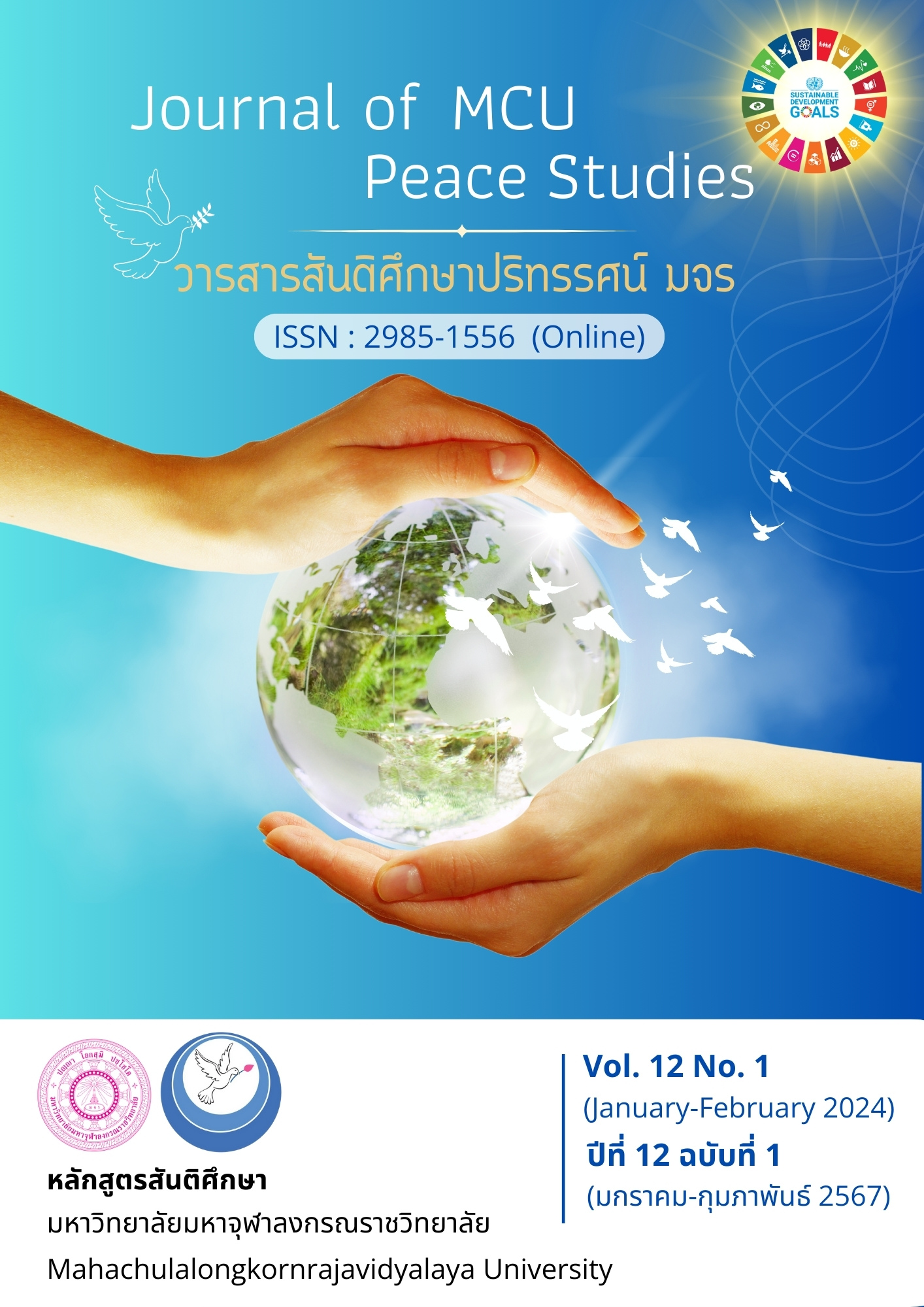Sapao: From Faith to Economic and Cultural Development in the Wang River Basin
Main Article Content
Abstract
The research article aims to present the 'Long Sapao' tradition in the Wang River basin, where belief and faith have evolved into a cultural activity akin to the 'Loy Krathong' festival. Long Sapao involves floating junk in the river as an apology to the river and a desire to be free from all suffering, sadness, and disease. Furthermore, any young individuals who desire to marry will pray for a successful love life or for their wishes to come true. This Long Sapao tradition has become a tradition of Lampang provincial agencies and people of Lampang province, in which they mobilize via provincial policies, resulting in spatial economic development and becoming well-known among Thai and foreign tourists. The tradition also promotes economic growth, focusing on tourism, trade and investment. In addition, it is also in line with the government's income-generating plans, as outlined in the "City Not to Miss" project as part of Thai Way of Tourism. As Lampang has been designated as a tourism city, Lampang has to motivate tourists to visit and offer them new experiences under the concept of "A city that does not change with the times"," which is the charm of the province. The Long Sapao tradition of Wiang Lakorn adds value to products and services derived from the wisdom of the people, leading to a creative economy based on cultural knowledge.
Article Details

This work is licensed under a Creative Commons Attribution-NonCommercial-NoDerivatives 4.0 International License.
Views and opinions expressed in the articles published by The Journal of MCU Peace Studies, are of responsibility by such authors but not the editors and do not necessarily reflect those of the editors.
References
Chaimuangchuen, P. (2014). Long Sapao: Traces of Traditions in the Past. Lampang: A Century Ago.
Inprom, K. (2022). Long Sapao Tradition. Lampang: Lecturer in Social Studies General Department Lampang Technical College.
Integrated Provincial Executive Committee, Lampang Province Lampang Provincial Office Strategic and Information Group for Development of Lampang Province. (2018). Lampang 5-Year Development Plan (2018-2022). Review Edition 2021. Retrieved on December 31, 2022, from https://www.lampang.go.th/strategy/2563/img61_65-r2.pdf
Lampang Municipality. (2022). Road of Sapao. Retrieved December 31, 2022, from https://web.facebook.com/274768539314371/photos
Lampang Provincial Cultural Office. (2018). Long Sapao Chao Lakon Festival 2018. Retrieved December 5, 2022, from https://www.m-culture.go.th/lampang/ewt_news.php?nid= 1937&filename=index
Lampang Provincial Cultural Office. (2022). Long Sa Pao or Loi Krathong. Retrieved December 5, 2022, from https://www.m-culture.go.th/lampang/ewt_news.php?nid=2164&file name=index.
Mahachulalongkornrajavidyalaya University. (1996). Thai Tripitakas. Bangkok: MCU Press.
Nilkan, L. (2018). Belief Culture and Community Faith Management. Narkbhutparitat Journal Nakhon Si Thammarat Rajabhat University, 10(2), 11-20.
Office of the Promotion of Arts and Culture Chiang Mai University. (2022). Religion and Beliefs of the Lanna People. Retrieved December 31, 2022, from http://art-culture.cmu.ac.th/ lanna/articleDetail/857
Payomyong, M. (1986). Thai Lanna Tradition Volume 1. Chiang Mai: Sor Subpim.
Phra Brahmagunaporn (P.A. Payutto). (2010). Thammanoon Life. (12th ed.). Bangkok: Sahathamik.
Travel Around the World Travel. (2023). The Only Land Heritage in Thailand. Retrieved December 31, 2022, from https://www.travelaroundtheworld-mag.com/update/lampangculture/

